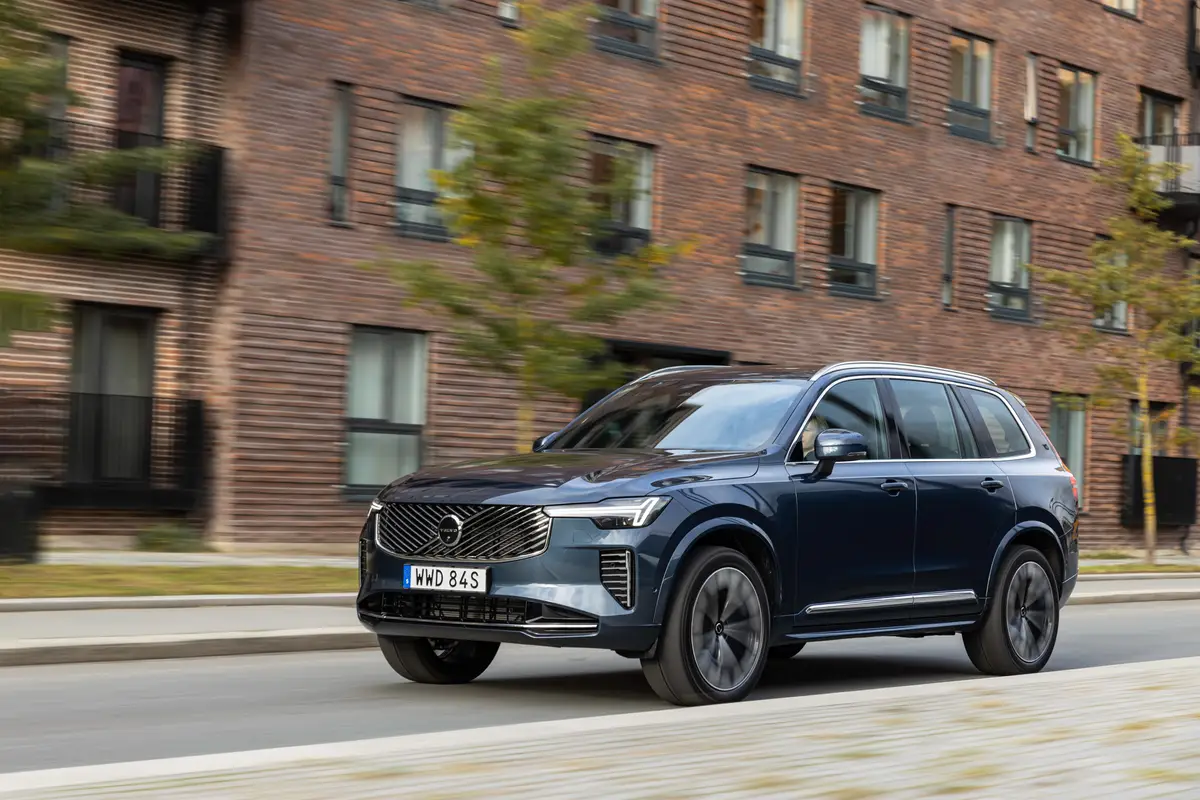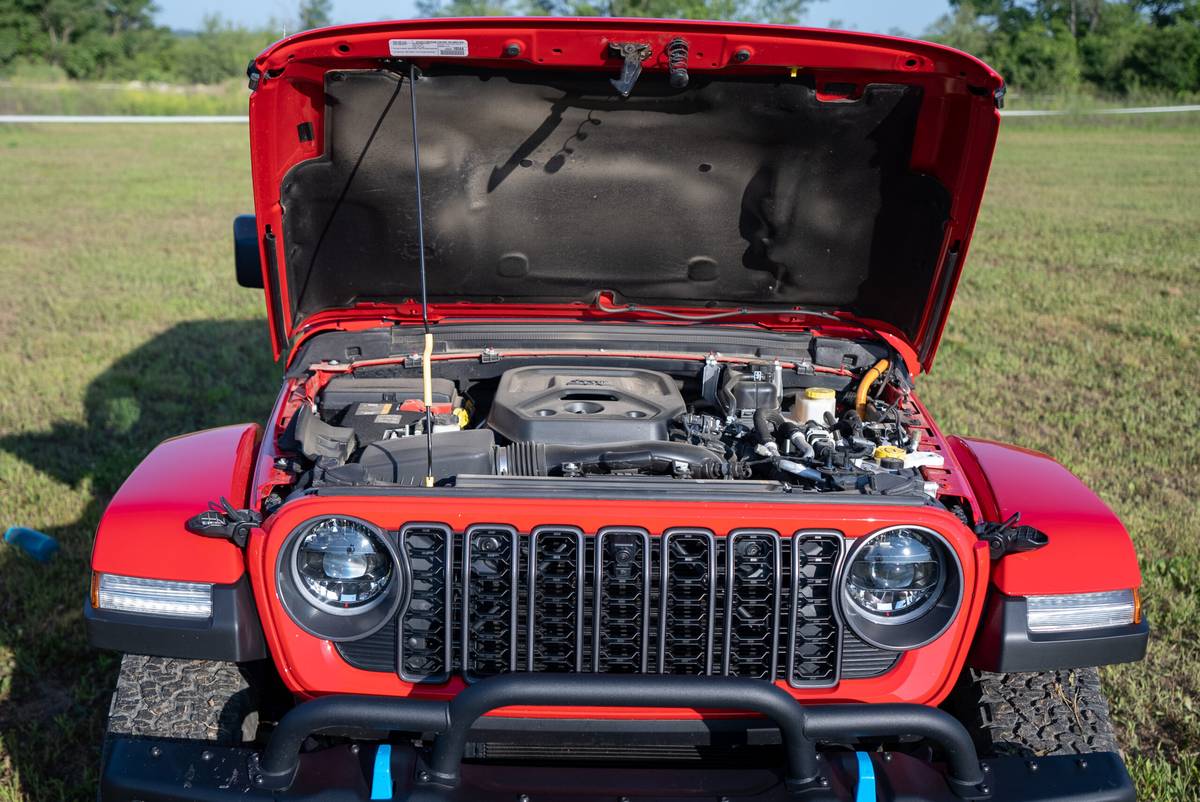Star-Telegram.com's view
It’s time to give Chrysler some credit: The company finally has a pair of midsize sedans that can run with the big boys.
For 2007, the completely new Chrysler Sebring arrived, and now for 2008, the Dodge Avenger version has made its way to showrooms.
Surprisingly, both are quite credible entries in this important segment, which accounts for 1.9 million sales each year – 31 percent of the total passenger-car market. I doubt that anyone at Toyota or Honda is worried that either of these new Chrysler Group vehicles will unseat the Camry and Accord as the top-sellers in this class.
But anyone looking for a midsize sedan, and who isn’t dead-set against buying an American brand, should consider these refreshing new entries.
For this report, we tested the Avenger. It went on sale in February as an early ’08 model, giving Dodge its best chance yet to compete on the same level as the segment leaders.
Styling alone is a good reason to choose the Avenger over one of the plain-vanilla Japanese models.
But there’s more to the Avenger than just compelling styling. This is a well-engineered, cleverly outfitted, fun-to-drive sport sedan.
As I’ve noted before, not all of the Japanese midsize sedans are as boring as the Camry and Accord. The redesigned Nissan Altima and the Mazda6 are more stylish, and they perform better as well.
But the Avenger is right up there with them, not only in styling, but also in the areas of performance, interior design and – yes – quality.
This car also is way ahead of the Dodge Stratus, the car it replaced, which was never a serious entry in this class.
Between these two new Chrysler Group models, I’m still trying to decide whether I like the Avenger or the Sebring better.
It’s pretty much a tossup.
The Sebring has a classy look that draws some of its cues from its bigger sibling, the Chrysler 300 large sedan.
The Avenger, though – and particularly the sporty R/T model that we tested – has a more-aggressive look that fits with Dodge’s image as a performance brand.
Although these two cars are virtually identical underneath, they have enough exterior differences that they aren’t even close to being clones of each other.
Sticker prices are nearly identical, though.
The top-of-the-line R/T model starts at $22,870 (plus $675 freight).
With the optional leather interior and heated front seats (a $775 package), our R/T test car’s sticker totaled a quite reasonable $24,320. To get a Camry or Accord this well equipped, you would pay about $3,000 more.
You’d probably make up that difference in the short term with the better resale values of the Japanese brands. But for those who keep cars a long time, the Avenger or Sebring would still be a good value.
Bringing the Avenger and revised Sebring to market are part Chrysler’s push to revitalize its car lines, an important move now that truck and SUV sales are falling with the increasing cost of gasoline.
The same emphasis on cars is under way at Ford and GM, as well as their traditionally strong truck business falters.
Fuel economy is one of the strengths of the Avenger for those looking to get out of their gas-guzzling SUVs or family-size pickups.
With the base four-cylinder engine, for instance, the Avenger’s EPA ratings are 21 miles per gallon city/30 highway, using the new, more-realistic 2008 formula. (Under the 2007 formula, the ratings would have been 24 city/32 highway.)
The 2.4-liter is Chrysler’s new world engine, whose design was co-developed with South Korea’s Hyundai. Hyundai and Chrysler manufacture their own versions of the engine, however. In the Avenger, the engine turns out 173 horsepower and 166 foot-pounds of torque.
The Avenger’s aggressive, youthful look is the product of lead designer Ryan Nagode, who is just four years out of design school.
A particularly cool pair of sunglasses that he likes to wear inspired the front end he created for the Avenger, he said during an Avenger media program in January. He called the styling a mix of “bold, powerful, capable and street-smart.”
One of the car’s strongest features is its “full-mouth grille,” which Nagode called “the new face of Dodge.” The side profile, with its muscular shoulders, was copied from the Charger, the brand’s large sedan.
The car’s headlights, partially tucked up under the hood, help give the Avenger a “sinister look,” Nagode said.
Flares in the outer bumpers under the headlights were designed to look almost like boxing gloves to give the car an aggressive stance, he added.
Inside, the Avenger is much more refined than the Stratus, and roomier as well. Overall, the Avenger is four inches taller and 1.2 inches wider than the Stratus. It is built on a completely new chassis that is considerably stiffer, which helps improve road handling and decrease noise in the cabin.
The base model is the SE, which comes with the 2.4-liter four-cylinder engine, a four-speed automatic transmission, and 16-inch wheels, for a starting price of $18,895, including freight.
That’s $1,605 less than the starting price of the 2007 Stratus, yet the Avenger even has $985 more content than the base Stratus. The extras include standard side-curtain air bags, front seat-mounted side air bags, Chrysler’s Chill Zone cooled glove box, an anti-theft alarm, and a tilt/telescopic steering column.
The midlevel model is the SXT, with the same 2.4-liter engine and four-speed transmission, but with 17-inch machined-aluminum wheels. It starts at $19,795. An SXT version with a special sport appearance package lists for $21,695. A 2.7-liter V-6 engine is optional on the SXT, and it is connected to the same four-speed automatic gearbox.
This engine produces 189 horsepower and 191 foot-pounds of torque. Fuel-economy ratings are 19 city/27 highway (22/30 for 2007).
With the R/T comes a 3.5-liter V-6 rated at 235 horsepower and 232 foot-pounds of torque. It’s connected to a smooth six-speed automatic transmission with a manual-shift feature (clutchless, of course). Mileage estimates are 16 city/26 highway (18/28 for 2007).
The R/T also comes with 18-inch machined-aluminum wheels, dual three-and-a-half-inch chrome exhaust tips and a rear spoiler. Optional are 18-inch chrome wheels and the two-tone leather interior.
Two versions of the R/T are offered: the front-drive model, which we tested, and an all-wheel-drive model, which starts at $25,545.
All-wheel drive is offered for the first time on a Dodge midsize sedan. It’s fully automatic, requiring no driver input.
Using an electronically controlled coupling, this system transfers power from the traditional front-wheel-drive configuration to the rear wheels based on the position of the accelerator. Chrysler says this allows the system to anticipate wheel slippage before it can occur.
Standard on all models is the Chill Zone glove box at the top front of the dash on the passenger side. It can hold several beverage cans, and uses the vehicle’s air conditioning and ventilation system to keep the drinks cool.
Optional is a cupholder between the two front bucket seats that can heat a drink to 140 degrees or cool it to 35 degrees.
Other Avenger options include Chrysler’s new MyGIG audio/navigation system with its own 20-gigabyte hard drive that stores up to 1,600 songs; and a rear-seat entertainment center that includes a DVD player screen that pops up from the back of the front center console.
The rear seat has a 60/40 split-folding feature to increase cargo space, and even the front passenger seat can be folded forward to extend cargo into that area.
The folded front seatback can be used as a desk for a mobile office, and is big enough to accommodate a laptop computer.
G. Chambers Williams III is staff automotive columnist for the San Antonio Express-News and former transportation writer for the Star-Telegram. His automotive columns have appeared regularly in the Star-Telegram since 1995. Contact him at (210) 250-3236; chambers@star-telegram.com.
At a Glance: 2008 Dodge Avenger sedan
The package: Midsize, four-door, five-passenger, front-wheel-drive, V-6 powered sedan.
Highlights: New for 2008, this car replaces the mediocre Stratus and gives Dodge its best midsize sedan yet. It has great styling, a well-designed interior, good performance, and lots of standard amenities.
Negatives: Outdated four-speed automatic transmission in base models hurts fuel efficiency – the optional six-speed should be standard.
Engines: 2.4-liter inline four-cylinder; 2.7-liter V-6; 3.5-liter V-6.
Transmissions: Four-speed automatic; six-speed automatic.
Power/torque: 173 HP/166 foot-pounds (2.4-liter); 189 HP./191 foot-pounds (2.7-liter); 235 HP/232 foot-pounds (3.5-liter).
Length: 190.9 inches.
Curb weight: 3,355-3,738 pounds
Brakes, front/rear: Disc/drum, power, antilock (four-wheel disc standard on R/T, optional on SXT).
Electronic stability control: Optional on uplevel models, except standard on R/T with all-wheel drive.
Side air bags: Front seat-mounted; side curtain for both rows.
Trunk volume: 13.3 cubic feet.
EPA fuel economy (2008 formula): 21 mpg city/30 highway (2.4-liter); 19/27 (2.7-liter); 16/26 (3.5-liter, front drive).
Fuel capacity/type: 16.9 gallons/unleaded regular (front drive); 17.3 gallons/unleaded regular (all-wheel drive).
Major competitors: Honda Accord, Toyota Camry, Nissan Altima, Mazda6, Mitsubishi Galant, Chrysler Sebring, Ford Fusion/Mercury Milan, Chevrolet Malibu, Hyundai Sonata, Kia Optima, Subaru Legacy, Pontiac G6, Volkswagen Passat.
Base price range: $18,895-$25,545, including $675 freight.
Price as tested: $24,320, including freight and options (R/T, front-wheel drive, leather package).
On the Road rating: 8.5 (of a possible 10).
Latest news



